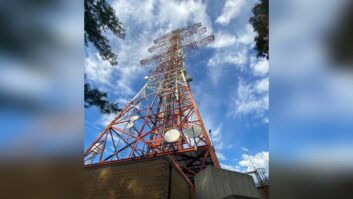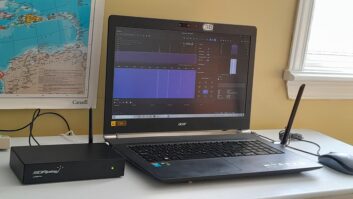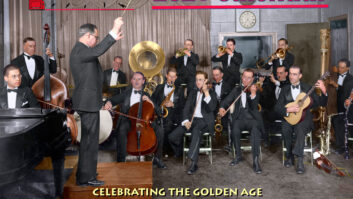Shortwave radio fans can relax: The world’s shortwave radio frequencies have been reallocated for summer and autumn 2005.
This massive task is undertaken twice a year by the all-volunteer High Frequency Co-ordination Conference, an informal international group of engineers representing about 40 countries that account for 75 percent to 80 percent of shortwave radio broadcasts.
The HFCC sets the frequency allocations with the authority of the International Telecommunications Union.
Ionospheric reflection
Such coordination and reallocation are needed because shortwave radio relies on ionospheric reflection to achieve international coverage. The ionosphere’s characteristics change seasonally as the earth tilts on its axis as it rotates around the sun; so shortwave broadcasters must move around the bands to ensure that they use the most optimal frequencies to reach their target audiences.
The 119 delegates met at the Marquis Reforma Hotel in Mexico City in February.
“It was the first time that this meeting, which is held jointly with members of the Arab States Broadcasting Union, has ever been held in Latin America,” said Jeff White, general manager of WRMI Radio Miami International and chair of the event. White also served as representative for the U.S. National Association of Shortwave Broadcasters at the meeting.
“It is also the first time that U.S. international shortwave broadcasters have organized an HFCC conference,” said White. “As the U.S. is the largest user of shortwave spectrum, it only made sense for a U.S. organization to host the event.”
Originally, the HFCC conference was to be held in Miami, where WRMI is based; however, “some of the Arab delegates were concerned that they might not be able to get U.S. visas, so we went to Mexico City instead,” White said.
Without a central authority to impose frequency allocations, one might expect the HFCC to dole out frequencies by lottery, seniority or some other rule-based process. Not so; in the real world of shortwave frequency allocation, everyone gets to make their own plans.
Preferred plans
“Each of the stations devise their preferred allocation plan, selecting frequencies and times that maximize their chances of reaching their target audiences,” said White. Those schedules are fed into a server that compiles and compares these allocations, collecting them into a global HFCC frequency master list. The list is then made available to delegates for review.
Of course, there are instances when two broadcasters want the same frequency, or have unintentionally selected adjacent channels that could interfere with each other.
The HFCC’s database program is designed to spot such “collisions” and to alert the delegates about them.
“When collisions occur, it is up to the delegations in question to get together and sort the issue out,” said White. “Sometimes the problem can be solved by one station choosing another time or frequency. Other times, a simple change in one broadcaster’s antenna heading can allow both stations to use the same frequency if they are broadcasting to different regions of the world.”
So happens if neither delegation will budge? Nothing.
“There are lots of collisions that are never resolved because neither broadcaster wants to give up the frequency,” said White. “Sometimes they interfere with each other. Sometimes both of their signals get through at different times.”
The HFCC generally succeeds in allocating the world’s shortwave radio frequencies – no small feat. White credits the professionalism of HFCC’s member engineers for that success.
No politics
“There are really no politics involved when these people get together,” he said. “You will see U.S. engineers working with Iranians, the Chinese working with the Russians. Politics really do not matter at HFCC meetings, because the delegates generally try to find allocations that work for everyone.”
This said, not everyone attends the HFCC meetings. A case in point is Radio Habana Cuba.
“Despite the fact that we invite every country to these meetings without exception, Cuba does not attend,” said White. “However, chances are that they use the HFCC’s allocation data to decide which frequencies to use. Otherwise, they’d be in danger of not being heard due to interference.”
And the danger of interference is actually on the increase. According to White, demand for shortwave channels has never been higher.
“Statistics from the HFCC show that there hasn’t been a lessening in frequency demand, even though some government broadcasters have cut back their hours,” said White.
“In fact, there is a definite shortage in the allocated shortwave radio bands. This is why some countries’ telecommunications authorities allow their broadcasters to use ‘out of band’ frequencies, as long as they don’t interfere with the spectrum’s approved users.”
And new technologies, like the Digital Radio Mondiale system for digital short-, medium- and long-wave broadcasting, only add to the concerns.
“Adding DRM broadcasts will only worsen the shortage, since broadcasters aren’t going to preempt their regular analog channels for these tests,” he said. “Until DRM radios become widely used, this will remain the case; broadcasters are not willing to sacrifice their analog audiences.”
Given this, the HFCC’s success in cooperatively allocating shortwave radio frequencies is likely to become more important.







